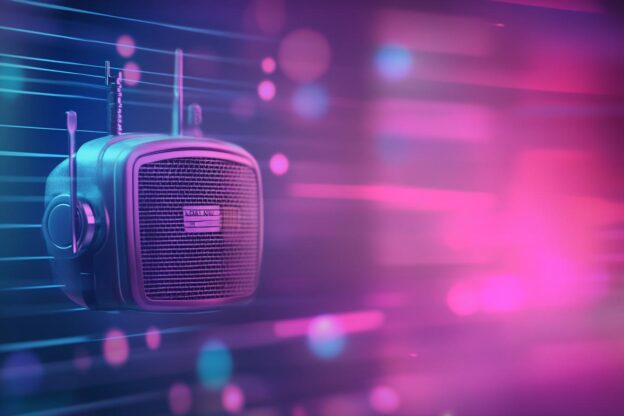The airwaves are buzzing with excitement as radio stations across the country embrace the resurgence of classic rock. From iconic hits to deep cuts, these stations are dedicating entire segments to celebrating the genre’s rich history and enduring influence. This renewed focus on rock music is not just a nostalgic trip down memory lane; it’s a reflection of the genre’s timeless appeal and its continued ability to connect with listeners of all generations. What makes rock music so enduring? Is it the raw energy, the rebellious spirit, or the ability to tell stories that resonate with our deepest emotions? Whatever the reason, rock music continues to captivate audiences and inspire new generations of musicians.
Beyond traditional radio, podcasts are also playing a significant role in shaping the landscape of rock music. Dedicated to exploring every facet of the genre, from its origins to its modern-day evolution, these podcasts provide a platform for deep dives into specific artists, albums, and eras. Think of it as a virtual record store, where passionate hosts and experts guide listeners through a treasure trove of musical knowledge. For those seeking a deeper understanding of the genre’s intricacies, podcasts offer a rich and engaging experience that goes beyond the typical radio format.

Rock Music Headlines
1. Rock Music Headlines
Rock music headlines are the first thing you see when you open a music website or magazine. They are designed to grab your attention and make you want to read more. A good rock music headline will be concise, intriguing, and relevant to the story. It will also use strong verbs and active voice to create a sense of urgency and excitement.
Rock music headlines can be about anything from new album releases and tour announcements to interviews with your favorite bands and breaking news about the music industry. They can be serious or funny, but they always aim to inform and entertain. Rock music headlines are an important part of keeping fans up-to-date on the latest happenings in the world of rock music. They help to create a sense of community among fans and provide a platform for discussion and debate.
2. Top Rock Bands and Artists
The world of rock music boasts a rich tapestry of legendary bands and artists who have shaped the genre’s sound and influenced generations of musicians. From the electrifying energy of Led Zeppelin to the raw power of The Rolling Stones, these icons have left an indelible mark on music history. The Beatles, with their catchy melodies and innovative songwriting, revolutionized popular music, while Pink Floyd pushed the boundaries of rock with their psychedelic soundscapes and thought-provoking lyrics. These trailblazers, along with countless others, have cemented rock’s place as a cultural phenomenon.
Beyond the established giants, a new wave of rock artists continues to emerge, capturing the hearts of music lovers with their unique styles and powerful performances. Bands like The Strokes, Arctic Monkeys, and The Killers have breathed fresh life into the genre, blending classic rock elements with modern sensibilities. Solo artists such as Jack White, Florence Welch, and St. Vincent are pushing the boundaries of rock with their experimental sounds and captivating stage presence. These contemporary artists demonstrate that rock music is alive and well, constantly evolving and inspiring new generations of musicians.
3. New Rock Releases and Tours
The rock music scene is buzzing with new releases and exciting tour announcements. Several established bands are dropping highly anticipated albums, rekindling the flames of their devoted fan bases. Alongside these veteran acts, a fresh wave of rock bands is making a splash with their innovative sounds and energetic performances. These newcomers are breathing new life into the genre, pushing boundaries and captivating audiences with their unique styles.
From stadium-sized extravaganzas to intimate club shows, rock fans have plenty of opportunities to experience their favorite artists live. Some bands are embarking on extensive world tours, while others are focusing on regional shows, giving fans across the globe a chance to witness the power of rock music. The energy and excitement of a live rock concert are unmatched, creating a shared experience that fosters a sense of community and lasting memories for both the performers and the audience.
4. Rock Music Festivals
Rock music festivals are vibrant celebrations of the genre, bringing together fans and artists for days of music, community, and unforgettable experiences. These events often feature diverse lineups spanning various rock subgenres, from classic rock to punk and metal. They provide a platform for established acts to connect with their audiences and for emerging bands to gain exposure. Beyond the music, festivals often offer a range of activities, including food vendors, art installations, and merchandise booths.
Rock music festivals create a unique atmosphere that fosters a sense of shared passion and camaraderie. Fans gather from all walks of life, united by their love for the music. Festivals provide a space for fans to connect with fellow enthusiasts, share stories, and create lasting memories. They are a testament to the enduring power of rock music to bring people together and create a sense of community.
5. Rock Music News and Interviews
Dive into the world of rock music with our latest news and interviews! We bring you exclusive insights from the artists you love, covering everything from upcoming albums and tours to behind-the-scenes stories and industry happenings. Whether it’s a legendary band making a comeback or a fresh face shaking up the scene, we keep you informed and entertained with the hottest rock news.
Our team of passionate rock writers goes beyond the headlines to deliver in-depth interviews with the biggest names in the genre. We uncover the creative process behind their music, get their thoughts on the current state of rock, and ask the burning questions you’ve always wanted to know. Join us as we celebrate the power, passion, and innovation that defines rock music.
Conclusions
So there you have it, folks! We’ve covered the hottest rock music news, from the biggest headliners to the newest bands hitting the scene. You’re all caught up on the latest releases, upcoming tours, and the must-see rock festivals. And, of course, we’ve given you the inside scoop on the latest rock news and interviews. Tune in next week for another dose of rockin’ good times!


















